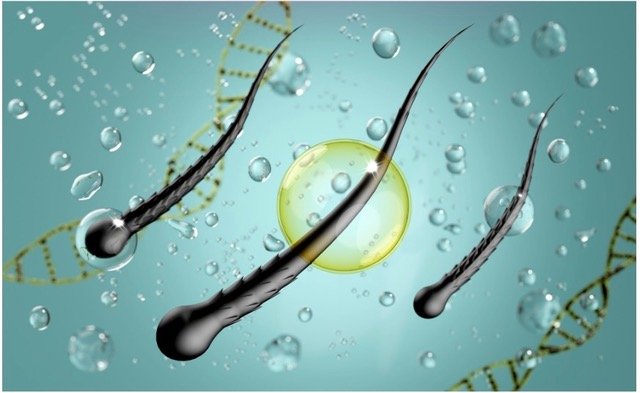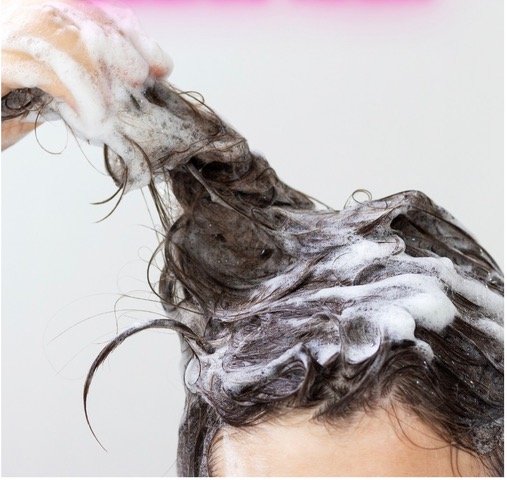What You Need to Know about Surfactants in Shampoo: A Trichologist’s Take
According to U.S. statistics, over $3.6 billion of shampoo was sold in 2023, making it a massive industry. With diverse product offerings tailored to different hair types and needs, it’s a daily essential that plays a role in just about everyone’s life.
The shampoo market is competitive, flooded with brands and specialists offering their distinct formulas that all intend to offer people some variation of healthier hair or scalp. Consumers read the front labels that tell them who the product is best for and what results they’ll get, choosing one that suits their hair type. But they don’t as often flip that bottle over and check the ingredient panel to tell them what’s actually going onto their hair and scalp.
So, what are the primary ingredients in your shampoo and how are they helping (or hurting) you? As a board-certified trichologist, I am especially passionate about educating people on hair and scalp product knowledge, including shampoo. For something you use every day, you should have a sense of what you’re using. If you don’t, you run the risk of using ingredients that might cause long-term, negative effects, or ones you simply just don’t need.
What ingredients are in shampoo?
Shampoo sold in most hair salons is composed of about 10-30 ingredients. Standard components of shampoo include cleansing agents, conditioning agents, stabilizers, and sometimes added fragrance. They’re all meant to work synergistically to clean the hair and scalp, keeping it manageable and healthy.
Certain formulas offer properties that prevent the hair shafts from tangles and damage while others will help preserve the cuticle layer to keep the hair shiny. Some might also contain active ingredients to treat scalp diseases like psoriasis and seborrheic dermatitis. Not to mention the tailored ingredients to reduce oiliness on the scalp or pityriasis capitis. Stabilizers and other additives might be included to maintain the consistency or shelf-life of the product. Fragrances might be added for a fresh scent on the hair after a washing.
Needless to say, there’s a lot that goes into these formulas. However, the primary active ingredients in shampoo you should know about are surfactants.
What are surfactants in shampoo?
Surfactants are cleaning agents in shampoo that works by weakening the bonds between impurities like dirt and oils, allowing them to be easily rinsed away. They dissolve these impurities, preventing them from sticking to the hair or scalp. Shampoo's main purpose is to clean the hair and scalp by removing grease, dirt, sweat, and other residues. The effectiveness of shampoo in cleaning depends largely on the presence of surfactants, especially sulfates.
When you apply shampoo to your hair, surfactant molecules surround oil and dirt particles, allowing them to be dispersed in water. This process, called emulsification, breaks down the oils and dirt, making it easier to rinse them away. Surfactants also create lather, which helps distribute the shampoo evenly and aids in the cleaning process.
Essentially, surfactants enable shampoo to effectively cleanse the hair and scalp by interacting with water and oils, facilitating the removal of dirt and impurities.
The number of surfactants in general is vast and continuously expanding as new compounds are synthesized and discovered. There are hundreds, if not thousands, of surfactants that have been identified and utilized across various industries, including personal care products like shampoos. Shampoos may contain one or multiple surfactants to achieve the desired cleaning efficacy and lathering properties.
The most well-known surfactants can be broken down into four groups, anionic surfactants, cationic surfactants, nonionic surfactants, and amphoteric surfactants. Here’s the best way to break these down:
Anionic surfactants
These surfactants have a negatively charged hydrophilic (water-attracting) head. They are effective cleaners but can be harsh on the hair and scalp, potentially causing dryness, frizz, or irritation. According to Dr. Maria Fernanda and Dr. Reis Gavazzoni’s 2015 publication in Trichology Journal, “In order to minimize damage, other surfactants called secondary surfactants such as nonionic and amphoteric surfactants are added to the formulation.”
Some commonly used anionic surfactants include Sodium Lauryl Sulfate (SLS), Sodium Laureth Sulfate (SLES), Ammonium Lauryl Sulfate (ALS), and Ammonium Laureth Sulfate (ALES).
Cationic surfactants
These surfactants have a positively charged hydrophilic head. They are often used in shampoos as conditioning agents to reduce static and improve manageability. Cationic surfactants can help soften and detangle the hair but may cause buildup over time if not rinsed thoroughly.
Some commonly used cationic surfactants include Cetyl Trimethyl Ammonium Chloride, Stearalkonium Chloride Cetyl, Behentrimonium Chloride, and Lauryltrimethylammonium chloride. In Dr. Maria Fernanda and Dr. Reis Gavazzoni’s 2015 publication in Trichology Journal, they mention, “They tend to neutralize the negatively charged net of the hair surface and minimize frizz. They are often used as shampoo's softeners.”
Nonionic surfactants
These surfactants have no charge and are generally milder than anionic or cationic surfactants. They are commonly used as co-surfactants or emulsifiers in shampoos to enhance cleansing and foam stability. Nonionic surfactants are gentle on the hair and scalp and are often included in formulations for their conditioning and thickening properties.
Some commonly used nonionic surfactants include decylglucoside. Though technically an amphoteric surfactant, Cocamidopropyl Betaine is often used as a co-surfactant in conjunction with nonionic surfactants. It is derived from coconut oil and is known for its mildness and ability to produce rich lather.
Amphoteric surfactants
These surfactants can function as either anionic or cationic depending on the pH of the solution. They are versatile and can provide mild cleansing and conditioning properties. They are generally suitable for sensitive skin and can help maintain the pH balance of the shampoo.
Based on the 2015 publication by Dr. Maria Fernanda and Dr. Reis Gavazzoni in Trichology Journal, “They are very mild and have excellent dermatological properties. There are two types of amphoteric compounds: Alkyl Iminopropionates and (Amido) Netaines.” This includes Cocamidopropyl Betaine and Disodium Cocoamphodiacetate.
What are the most common surfactants used in shampoo?
Common surfactants found in shampoos include sulfates Sodium Lauryl Sulfate and Ammonium Lauryl Sulfate. Sodium lauryl sulfate can irritate the skin and scalp. At my trichology center, I offer a shampoo that utilizes ammonium lauryl sulfate. In my practices, I’ve found it to be much less harsh, cleaning the scalp and hair well without causing irritation or frizz. It also will not dry out the hair shaft, which is especially important.
You might also find many shampoos to include cocamidopropyl betaine. This coconut oil derivative provides additional cleansing properties, helps lather the shampoo, and offers a mildness to the shampoo formula.
What should you look for in a shampoo?
Having practiced trichology for over a decade, I have been exposed to a plethora of hair types that all require specific care to maintain a healthy hair and scalp. There is no one particular ingredient that works best for everyone when it comes to shampoo—or any hair product.
That’s why getting a hair and scalp analysis from an expert trichologist is so beneficial. Once you understand the type of hair and scalp microbiome you’re working with, you can curate the right type of products to help you. Though there are lots of factors that contribute to your hair and scalp health—nutrition, hormones, environment, genetics, and more—choosing the type of ingredients you put on your hair is an important step.
For example, when it comes to my clients who have eczema, or who are prone to having sensitive skin, I often suggest they avoid surfactants. For clients who have tight, coily hair, or are prone to frizz, I often suggest they avoid sulfates. On the other hand, for clients who have oily scalps and hair, and who suffer from constant dandruff, I might suggest surfactants for their beneficial properties for oils.
Although most ingredients are considered safe products, certain shampoos can cause contact dermatitis and other scalp conditions. Common allergens in shampoos you might want to be mindful of include cocamidopropyl betaine, methylchloroisothiazolinone, formaldehyde-releasing preservatives, propylene glycol, Vitamin E (tocopherol), parabens, and benzophenones.
If you’re struggling to find the right products for your hair, or are experiencing common hair and scalp symptoms, reach out to me to book a session at my center in Manhattan. We can work together to come up with a personalized, homeopathic-based plan for how to take care of your hair and scalp.
Copyright Penny James Trichology Center 2024


